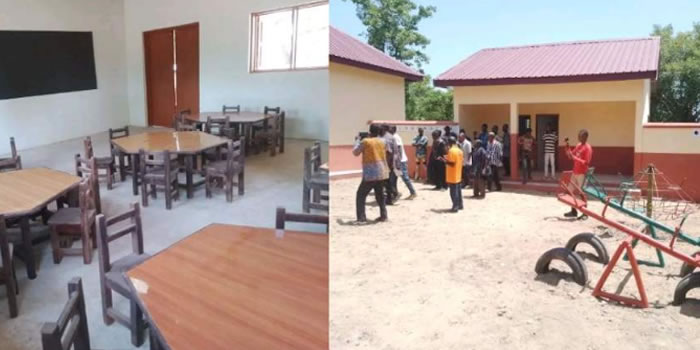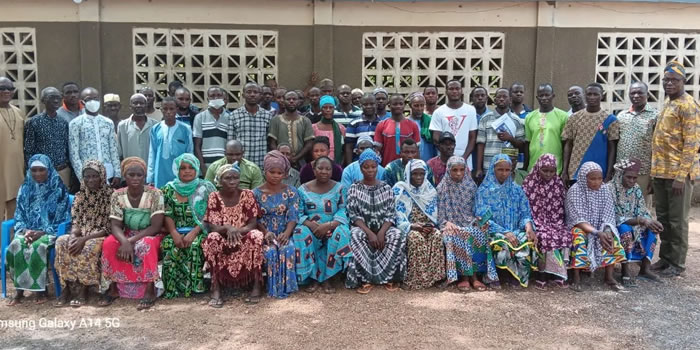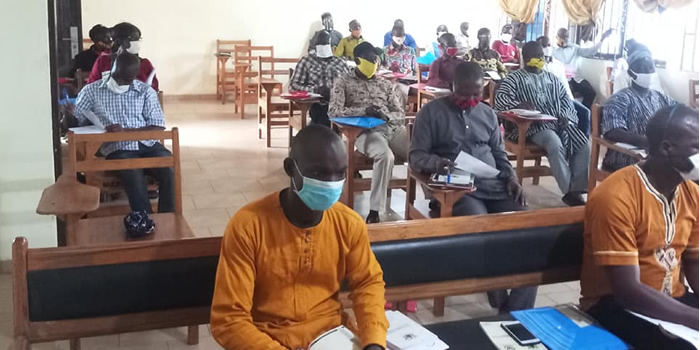

Structure
Agriculture and small scale- agro-processing accounts for over 90% of the district labour force and 10% are in commerce. The economy of the district is thus agriculture-based.
Resource Mobilization Analysis
There are two major sources revenue for the District Assembly. These are internally generated revenue and the externally generated revenue. The Internally generated revenue is derived from fees, rent, licenses and land charges. The DAC, Ceded revenue, HIPC and funds from GOG/Donor supported projects such as CBRDP, DWAP, CWSA constitute the external sources of revenue. In 2005, the District Assembly was able to realize only 53% of its estimated revenue. Table 3 shows estimated and actual revenue figures for 2005.
: Estim Actual revenue figures for 2005
SOURCE | ESTIMATED | ACTUALS |
A. Own Source Rates Lands Fees/Fines Licenses Rent Investment/Trading Miscellaneous
SUB- TOTAL
B.EXTERNAL SOURCE Common Fund DWAP STWSSP HIPC MPs Common Fund
SUB-TOTAL GRAND-TOTAL |
120.950.000.00 23.000.000.00 157.600.000.00 25.320.000.00 8.000.000.00 30.000.000.00 100.000.000.00
464.870.000
9.660.000.000.00 700.000.000.00 - 1.000.000.000.00 160.000.000.00
11.520.000.000.00 11,984,870,000.00
|
90.177.000.00 - 31.345.000.00 8.350.000.00
34.223.986.51 43.611.211.57
164.095.986.51
4.663.901.969 700.000.000 64.800.000 790.000.000 216.299.126
6.435.001.095 6,599,097,081.51
|
The major crops cultivated include, sorghum, millet, maize, cassava. Other crops are cowpea, bambara beans, groundnuts and rice. soya beans, cashew, cotton and mangoes are also cultivated mainly for sale. sheanut and dawadawa are also gathered and processed into butter for cooking, cosmetics and medicinal purposes. about 67% of farmers rely on animal drawn implements while 33% of farmers use labour-intensive methods of the hoe and cutlass.
Farming is rain fed and limited to the single rainfall regime from may to October and remains subsistent throughout the district. However, the district is able to produce enough food and livestock making it the ‘food basket’ of the region. in 2005 for example, the district was able to achieve 24.5 mt/ha yield for its major crops as against the targeted yield of 19.6 mt/ha.
Commerce/Industry
Small –scale activities include cloth/smock weaving, blacksmith, pito brewing, pottery and Shea- butter extraction. Markets in the district are periodic. They attract traders from within and outside the district and are a major source of revenue to the district. Improvements in market infrastructure will go a long way to expand the revenue base of the district.
Banking and finance
There is no bank in the district. It has only a credit union. People and organizations in the district are therefore forced to commute to wa for their banking needs.
Date Created : 11/17/2017 5:06:48 AM

















 facebook
facebook
 twitter
twitter
 Youtube
Youtube
 +233 593 831 280
+233 593 831 280 0800 430 430
0800 430 430 GPS: GE-231-4383
GPS: GE-231-4383 info@ghanadistricts.com
info@ghanadistricts.com Box GP1044, Accra, Ghana
Box GP1044, Accra, Ghana